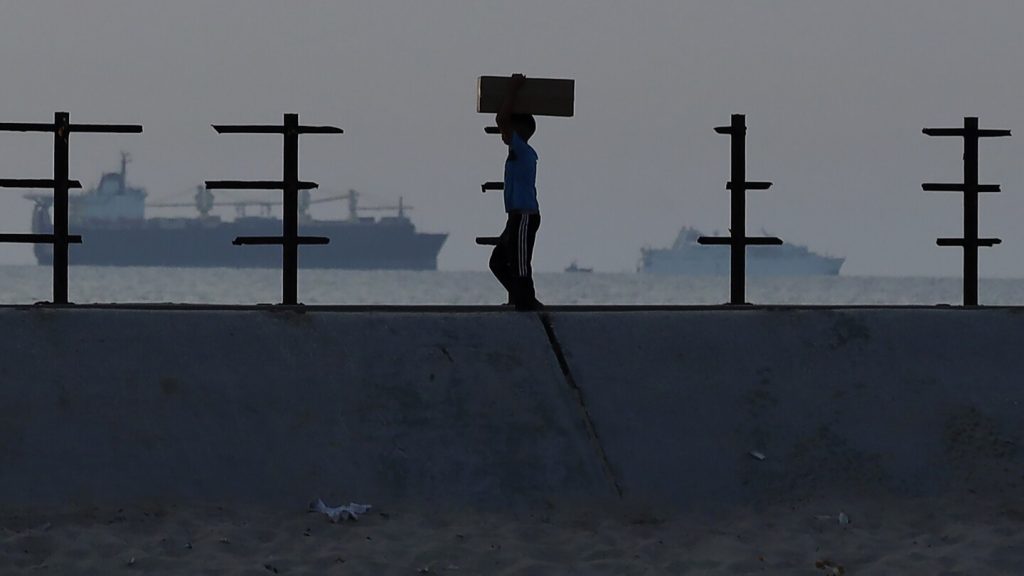The United States has launched a new aid project in Gaza aimed at providing much-needed supplies to the Palestinian people, who are facing dire conditions due to the ongoing conflict and limited access to food and other essential items. The project, a floating pier, faced challenges during its initial phase, with crowds overwhelming the trucks carrying aid and leading to a suspension of distribution. However, efforts have been made to improve the situation, with the U.S. military working with the U.N. and Israeli officials to find safer routes for aid delivery.
Despite these challenges, the U.S. pier managed to contribute 27 trucks of aid to the overall efforts in Gaza, out of a total of 70 trucks brought in through all land and sea crossings. The goal is to have the sea route operating at maximum capacity to bring in 150 truckloads of food, nutrition, and other supplies. The U.S. Agency for International Development stated that Gaza requires 600 trucks entering the territory daily to prevent a famine, which has already begun in the northern region and threatens to spread to the south.
While security issues were encountered by one of the trucks coming from the pier, U.S. officials described them as minor without providing specific details. The ongoing Israeli offensive in the city of Rafah has made it difficult for aid shipments to pass through, creating challenges for aid organizations to access necessary supplies for distribution. The U.S. administration has emphasized the importance of full access to land crossings for humanitarian shipments, calling for international support in ensuring the delivery of essential aid to the Palestinian population.
The Biden administration’s launch of the $320 million floating pier was a response to the limited food deliveries to 2.3 million Palestinians due to the Israel-Hamas conflict and Israeli restrictions on land crossings. Amid deteriorating conditions in the region, USAID’s response director for Gaza highlighted the various risks involved in humanitarian efforts. The pier aims to provide enough food for 500,000 people in Gaza when working at maximum capacity, while underscoring the need for continued access through land crossings for the remaining 1.8 million individuals in need.
Despite criticisms from some aid groups, including accusations of the pier being “humanitarian theatre,” U.S. officials defended the project’s impact in providing essential supplies for tens of thousands of people. They stressed the urgency of the situation in Gaza and the need for coordinated efforts to address the humanitarian crisis. As the conflict continues and conditions worsen, the international community must work together to ensure the delivery of aid to those most in need in Gaza. The U.S. pier project represents a step in the right direction, but further support and resources are required to effectively address the challenges facing the Palestinian population.


